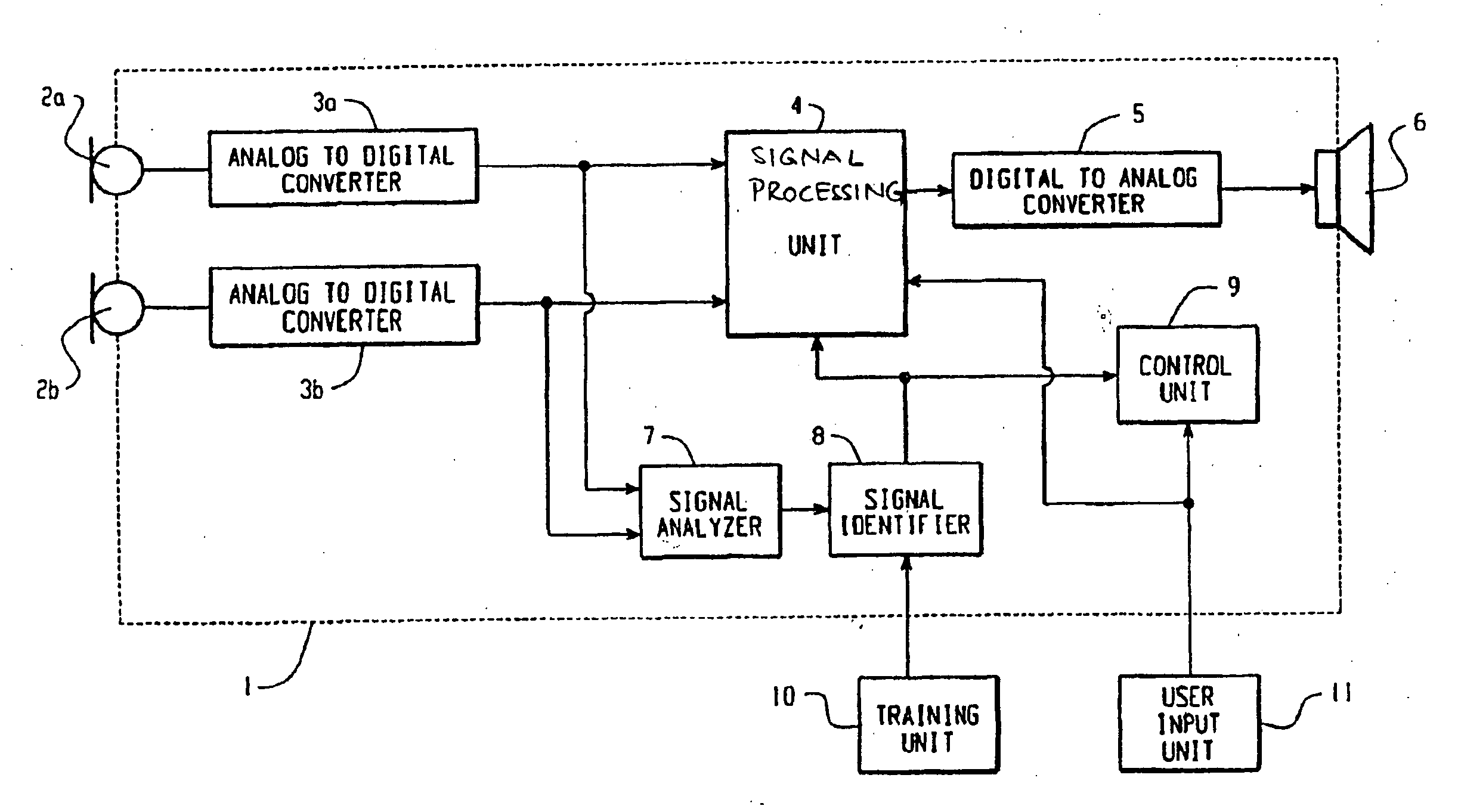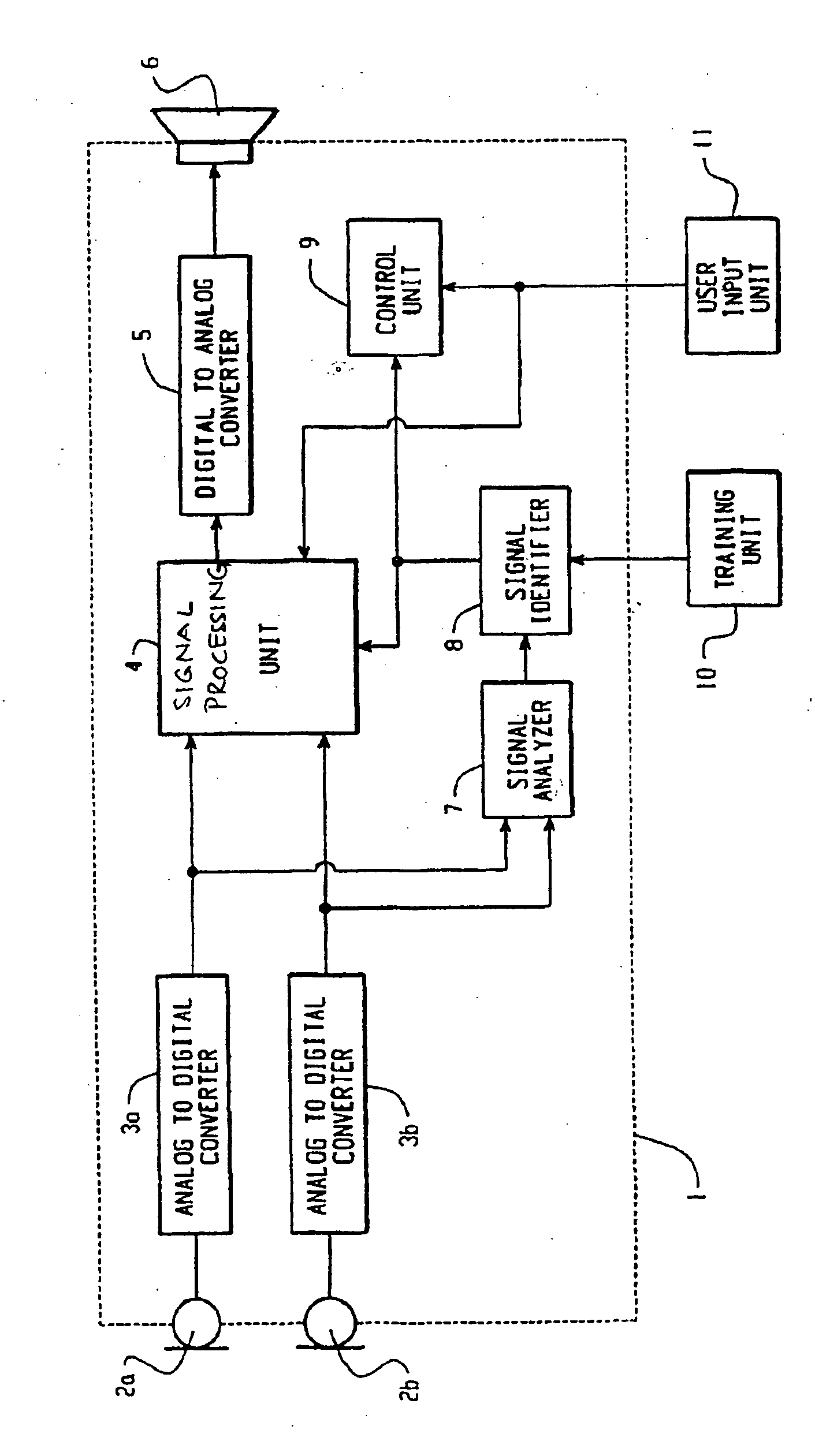Method to operate a hearing device as well as a hearing device
- Summary
- Abstract
- Description
- Claims
- Application Information
AI Technical Summary
Benefits of technology
Problems solved by technology
Method used
Image
Examples
Embodiment Construction
[0033] In the only FIGURE, the reference number 1 designates a hearing device. For the purpose of the following description, the term “hearing device” is intended to include hearing devices, or hearing aids, as used to compensate a hearing impairment of a person, but also all other acoustic communication systems such as radio transceivers (walky-talky) or the like. Furthermore, the term “hearing device” not only includes BTE (Behind-the-ear), ITC (In-the-Canal) and CIC (Completely-in-the-Canal) but also implantable devices.
[0034] The hearing device 1 comprises, in conventional fashion, three electro-acoustic converters 2a, 2b and 6, these being two microphones 2a, 2b and a loudspeaker 6, also referred to as a receiver in the technical fields of hearing devices. It is pointed out that the present invention may also only have one microphone instead of two. A main component of the hearing device 1 is a signal processing unit 4, in which, in case of a hearing aid, signal modification t...
PUM
 Login to View More
Login to View More Abstract
Description
Claims
Application Information
 Login to View More
Login to View More - R&D
- Intellectual Property
- Life Sciences
- Materials
- Tech Scout
- Unparalleled Data Quality
- Higher Quality Content
- 60% Fewer Hallucinations
Browse by: Latest US Patents, China's latest patents, Technical Efficacy Thesaurus, Application Domain, Technology Topic, Popular Technical Reports.
© 2025 PatSnap. All rights reserved.Legal|Privacy policy|Modern Slavery Act Transparency Statement|Sitemap|About US| Contact US: help@patsnap.com


